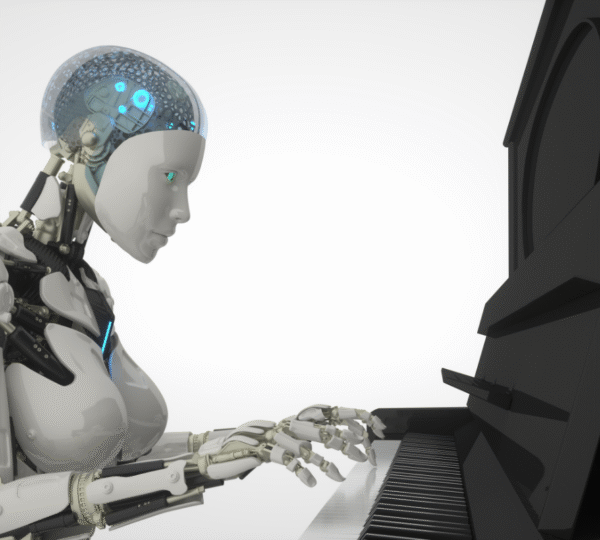
AI-Powered Productivity Tools
Maria is a project manager at a fast-paced digital agency. Every day, her to-do list grew longer, her inbox piled up, and meetings seemed endless. She tried planners, sticky notes, and even digital task apps, but nothing seemed to keep her ahead of the curve.
Then one of her colleagues introduced her to an AI-powered productivity assistant that could organize her schedule, summarize long email threads, and even suggest the best time to hold meetings based on everyone’s availability. For Maria, it felt like magic. Within weeks, she was spending less time on busywork and more time on creative problem solving.
Maria’s experience is not unique. As AI continues to advance, professionals across industries are discovering that these tools are not about replacing human effort but amplifying it.
Why AI Productivity Tools Matter
The average professional spends nearly three hours per day just managing email, according to McKinsey research. Add in meetings, project tracking, and administrative tasks, and little time remains for meaningful work.
AI-powered productivity tools step in to handle repetitive tasks, analyze data, and even learn your preferences over time. Instead of micromanaging calendars or sorting through cluttered files, you can focus on high-impact activities.
Fun Fact: Many email assistants can mimic your tone of voice. This means you can draft one email, and the AI learns your style to respond naturally to future messages. It is like having a personal ghostwriter who already knows how you communicate.
Popular Types of AI Productivity Tools
1. AI Task Management Tools
Tools like ClickUp AI or Motion can break down large projects into manageable steps. They prioritize tasks based on urgency and deadlines, so you do not have to spend hours figuring out what to do first.
Tip: Use AI task planners to schedule your day realistically. These tools often learn how long tasks take you and adjust plans accordingly.
2. AI Writing Assistants
From GrammarlyGO to Jasper AI, writing tools help draft blog posts, reports, or even simple emails. They check grammar, suggest rewrites, and generate content ideas.
Expert View: Dr. Ethan Mollick, a professor at Wharton, notes, “AI writing assistants are not about replacing human creativity. They are about giving you a powerful starting point.”
3. AI Meeting Assistants
Apps like Otter.ai and Fireflies automatically transcribe meetings, highlight key points, and even assign action items. No more frantically typing notes while missing the conversation.
Fun Fact: Some meeting assistants can detect sentiment in real time, showing whether participants are engaged, confused, or bored.
4. AI Calendar and Email Management
AI schedulers like Clockwise or Reclaim optimize your calendar by finding focus time and automatically rescheduling conflicts. Email tools like Superhuman AI summarize long threads and draft quick responses.
Tip: Use AI calendar tools to block off “deep work” sessions where you are not interrupted by meetings.
5. AI Knowledge and Research Tools
Platforms like Perplexity AI and Notion AI can summarize articles, pull data insights, and generate research briefs in seconds. Instead of spending hours reading reports, you get actionable takeaways instantly.
6. AI Design and Creativity Tools
Tools such as Canva AI or Adobe Firefly generate designs, presentations, and visuals faster than ever. This saves time for professionals who need to produce polished work without spending hours in design software.
Fun Fact: According to a 2023 PwC survey, AI-powered productivity apps can save employees up to 300 hours per year by automating repetitive tasks. That is nearly two months of working hours freed up for more meaningful activities.
Tips for Using AI Productivity Tools Effectively
- Start Small
Pick one area of your work that drains the most time, like email or scheduling, and try an AI tool there first. - Experiment with Features
Many tools have hidden functions. For example, some AI writing apps can generate outlines, while task managers can suggest the best order for your to-do list. - Balance AI with Human Input
AI works best as a partner, not a replacement. Always review generated content for accuracy and tone. - Integrate Tools into Your Workflow
Look for apps that connect with your existing systems like Slack, Google Workspace, or Microsoft Teams.
Expert Views
- Satya Nadella, CEO of Microsoft: “AI is the ultimate amplifier. It helps us focus on what matters most.”
- Cal Newport, productivity expert: “The key to deep work is eliminating distraction. AI tools that manage tasks and communication free up mental energy to focus deeply.”
- Anne Morriss, leadership coach: “AI is not about speed alone. It is about shifting human effort to higher value work.”
Overcoming Common Concerns
Concern 1: Will AI Take My Job?
Experts agree that AI is more likely to reshape jobs than eliminate them. Instead of doing all your work, it helps you do it faster and better.
Concern 2: Is It Too Complicated?
Most modern tools are designed with intuitive interfaces. Many come with onboarding guides that take less than 15 minutes to learn.
Concern 3: What About Cost?
There are free versions of many popular tools. Paid plans usually pay for themselves by saving you time and boosting efficiency.
Fun Facts
- By 2030, AI is projected to add $15.7 trillion to the global economy, according to PwC.
- 75 percent of workers using AI productivity apps report feeling less stressed at work.
- AI can analyze more than 100 pages of text in under a minute, a task that would take a human hours.
How AI Productivity Tools Support Work-Life Balance
One of the underrated benefits of AI is stress reduction. By handling repetitive tasks, AI frees up time for family, hobbies, and rest.
Example: Instead of spending evenings catching up on emails, Maria now lets her AI assistant draft responses, so she can spend that time with her children.
Expert Insight: Psychologist Dr. Adam Grant says, “Reducing unnecessary tasks not only improves productivity, it also improves overall well-being.”
Tips for Beginners Choosing AI Productivity Tools
- Identify Your Pain Points: Do you waste time on meetings, emails, or planning? Start there.
- Check Compatibility: Make sure your tool integrates with apps you already use.
- Try Free Trials: Most platforms offer free tiers or trials, so you can test before investing.
- Track Your Time Savings: Notice how much time the tool saves in a week. If it frees up even one hour daily, it is worth keeping.
- Stay Updated: AI tools improve constantly. Regular updates often add new features that make them more useful.
Conclusion
AI-powered productivity tools are no longer futuristic luxuries. They are practical, accessible, and designed to make daily work easier. From organizing calendars and managing tasks to drafting emails and summarizing research, these tools are like digital assistants that never sleep.
The real value of AI is not in doing everything for you but in giving you the space to focus on what truly matters. By removing the burden of repetitive and time-consuming tasks, AI creates room for creativity, innovation, and human connection.
If you are new to this space, start small. Choose one tool that solves a pressing problem in your workday, and build from there. The shift toward AI integration is not about working harder but about working smarter. With the right approach, AI productivity tools can help you reclaim your time, reduce stress, and achieve more with less effort.
References
- McKinsey & Company. (2021). The social economy: Unlocking value and productivity through social technologies.
- PwC. (2023). AI economic impact and productivity survey.
- Statista. (2023). AI adoption in workplaces report.
- Mollick, E. (2023). Wharton research on AI writing tools.
- Grant, A. (2022). The psychology of reducing unnecessary tasks.











